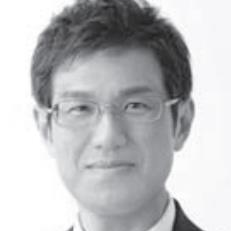Wide Bandgap Power Devices and Applications
A special issue of Energies (ISSN 1996-1073). This special issue belongs to the section "D1: Advanced Energy Materials".
Deadline for manuscript submissions: closed (31 January 2020) | Viewed by 12353
Special Issue Editors
Interests: electric vehicle; power electronics; green energy
Special Issues, Collections and Topics in MDPI journals
Interests: soft-switching DC–DC converters; resonant converters; high-frequency inverter
Special Issues, Collections and Topics in MDPI journals
Special Issue Information
Dear colleagues,
The Special Issue on wide bandgap power devices and applications in power electronics provides a forum for device scientists, circuit designers, and application engineers to share technology updates, research findings, development experience, and application knowledge.
Topics of interest include but are not limited to the following:
- Heteroepitaxial and bulk materials growth;
- Gate dielectrics and surface passivation;
- Device structures and fabrication techniques;
- Device characterization and modeling;
- High-efficiency and compact converters;
- SOAs including short-circuit, spike, and transient tolerance;
- Harsh environment (e.g., high temperature) operation and reliability;
- Packaging, power modules, and ICs;
- Hard-switched and soft-switched applications;
- Common-mode and EMI management;
- Gate drive and other auxiliary circuits;
- High-performance passive components;
Applications in renewable energy and storage, transportation, industrial drives, and grid power.
Prof. Ching-Ming Lai
Prof. Tomokazu Mishima
Guest Editors
Manuscript Submission Information
Manuscripts should be submitted online at www.mdpi.com by registering and logging in to this website. Once you are registered, click here to go to the submission form. Manuscripts can be submitted until the deadline. All submissions that pass pre-check are peer-reviewed. Accepted papers will be published continuously in the journal (as soon as accepted) and will be listed together on the special issue website. Research articles, review articles as well as short communications are invited. For planned papers, a title and short abstract (about 100 words) can be sent to the Editorial Office for announcement on this website.
Submitted manuscripts should not have been published previously, nor be under consideration for publication elsewhere (except conference proceedings papers). All manuscripts are thoroughly refereed through a single-blind peer-review process. A guide for authors and other relevant information for submission of manuscripts is available on the Instructions for Authors page. Energies is an international peer-reviewed open access semimonthly journal published by MDPI.
Please visit the Instructions for Authors page before submitting a manuscript. The Article Processing Charge (APC) for publication in this open access journal is 2600 CHF (Swiss Francs). Submitted papers should be well formatted and use good English. Authors may use MDPI's English editing service prior to publication or during author revisions.
Keywords
- Wide Bandgap Power Devices
- Power Electronic
- High Efficiency
- High Power Density






